
How to Use 8-channel analog multiplexer/demultiplexer: Examples, Pinouts, and Specs
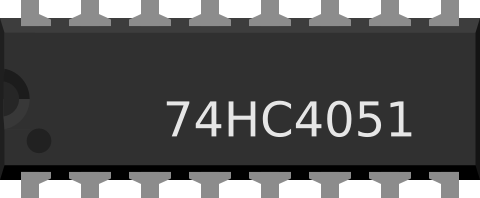
 Design with 8-channel analog multiplexer/demultiplexer in Cirkit Designer
Design with 8-channel analog multiplexer/demultiplexer in Cirkit DesignerIntroduction
The 74HC4051 is an 8-channel analog multiplexer/demultiplexer manufactured by NXP Semiconductors. This versatile device allows the routing of one of eight input signals to a single output line or vice versa. It is commonly used in applications requiring signal selection, data acquisition, and analog signal routing.
Explore Projects Built with 8-channel analog multiplexer/demultiplexer
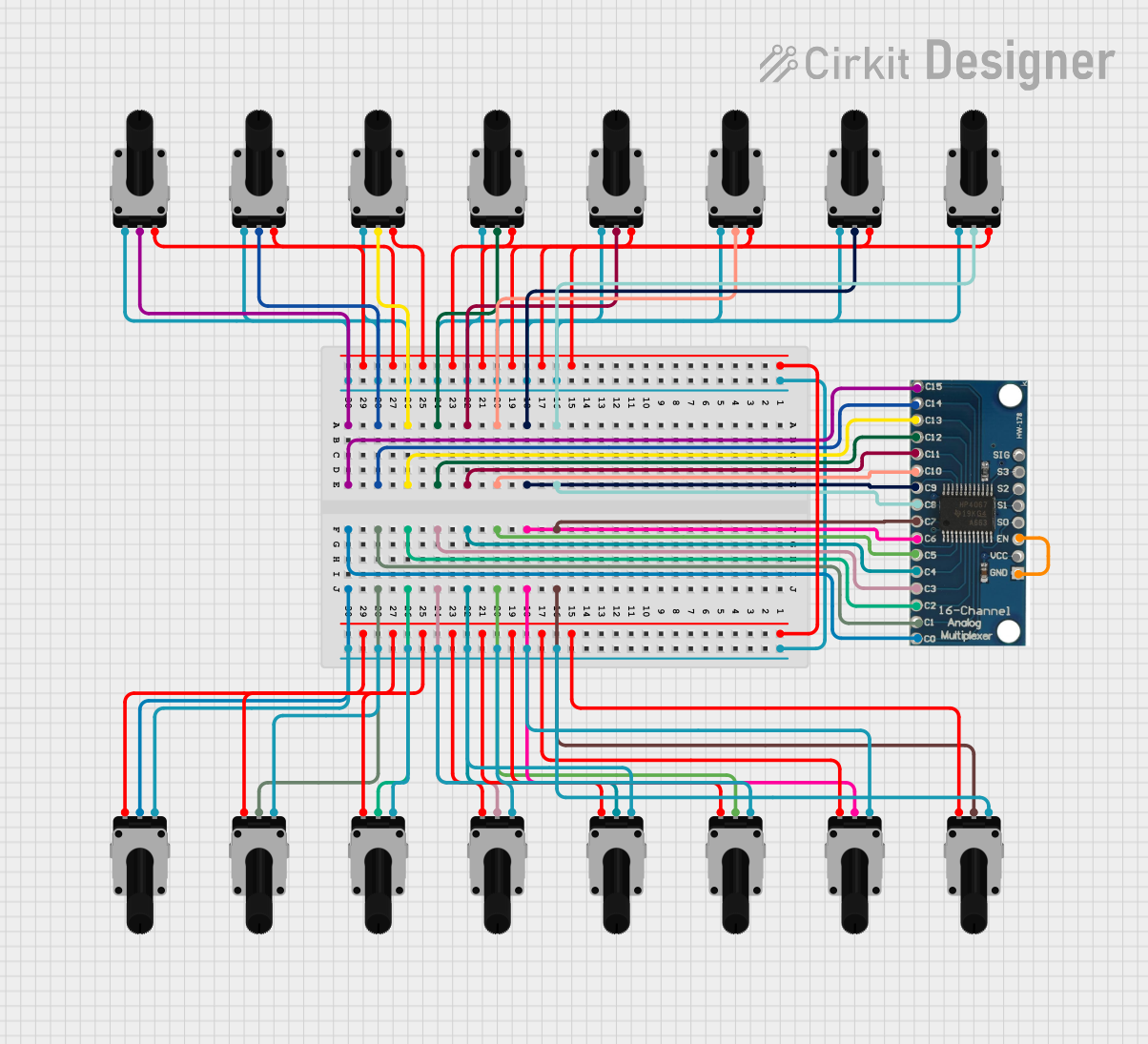
 Open Project in Cirkit Designer
Open Project in Cirkit Designer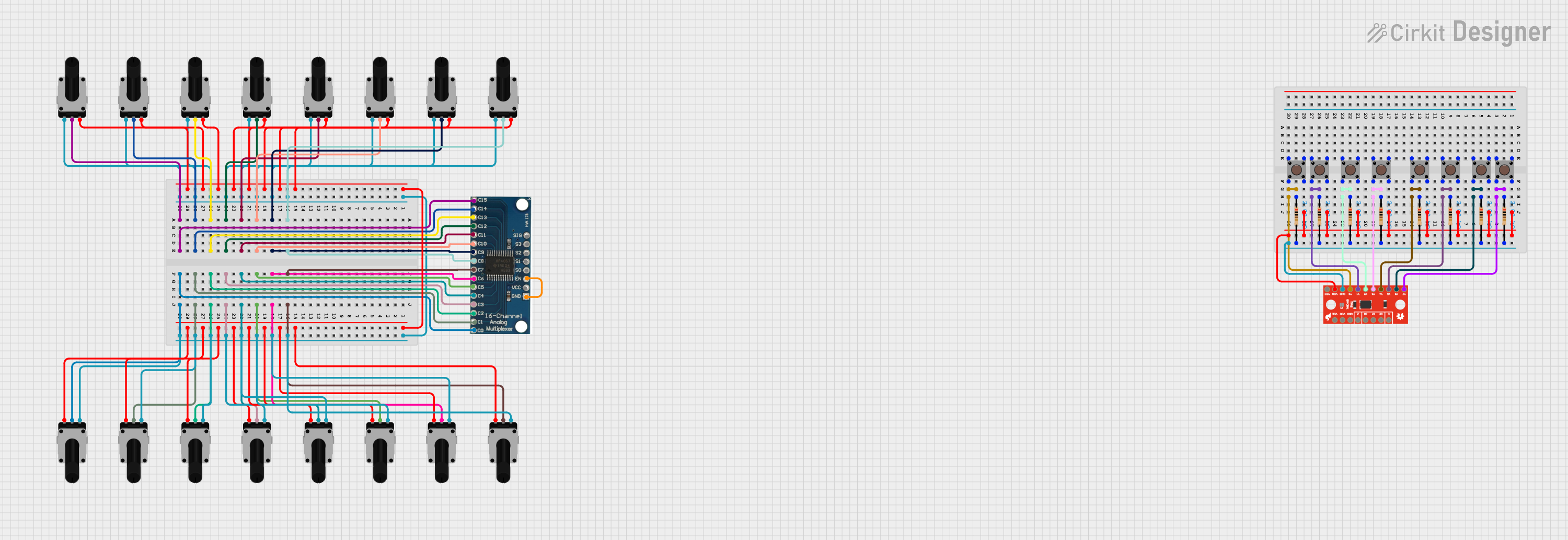
 Open Project in Cirkit Designer
Open Project in Cirkit Designer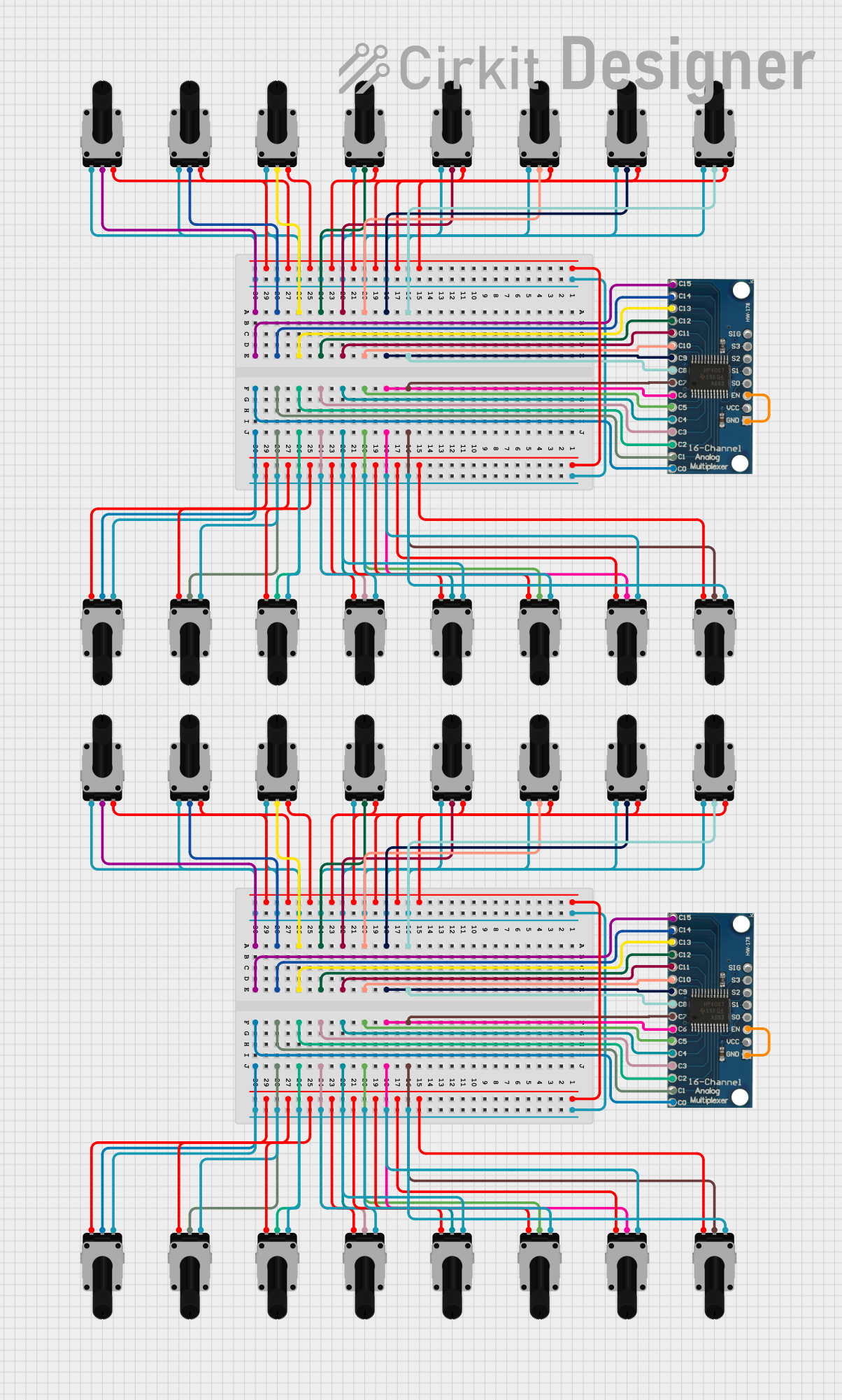
 Open Project in Cirkit Designer
Open Project in Cirkit Designer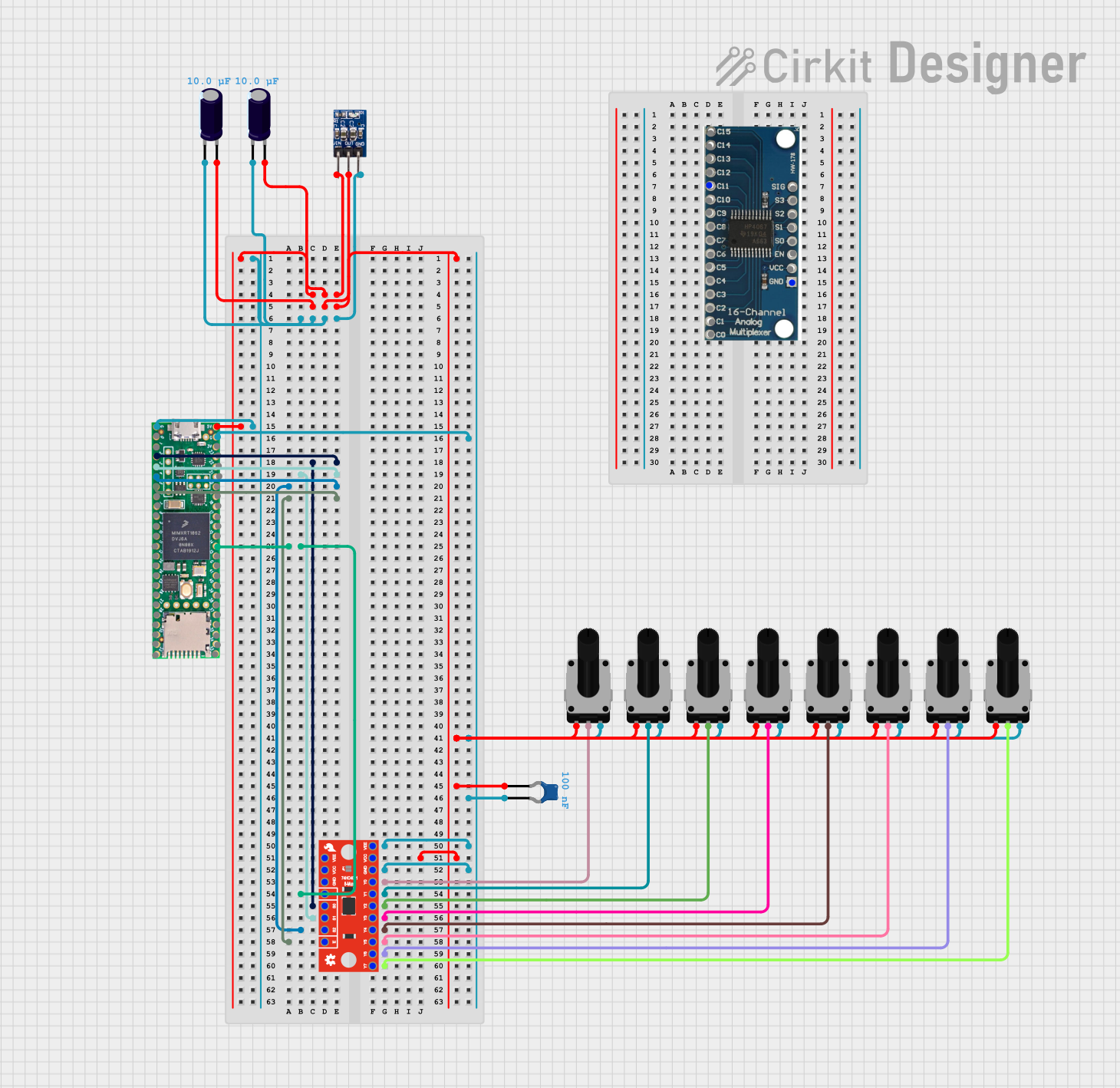
 Open Project in Cirkit Designer
Open Project in Cirkit DesignerExplore Projects Built with 8-channel analog multiplexer/demultiplexer

 Open Project in Cirkit Designer
Open Project in Cirkit Designer
 Open Project in Cirkit Designer
Open Project in Cirkit Designer
 Open Project in Cirkit Designer
Open Project in Cirkit Designer
 Open Project in Cirkit Designer
Open Project in Cirkit DesignerCommon Applications and Use Cases
- Analog signal selection in data acquisition systems
- Expanding the number of analog inputs for microcontrollers
- Audio signal routing and mixing
- Sensor multiplexing in embedded systems
- Test and measurement equipment
Technical Specifications
The 74HC4051 is a high-speed CMOS device that operates with both analog and digital signals. Below are its key technical details:
Key Technical Details
- Operating Voltage (Vcc): 2V to 10V
- Analog Signal Range: 0V to Vcc
- Control Logic Voltage Levels:
- Low: 0V to 30% of Vcc
- High: 70% of Vcc to Vcc
- On-Resistance (Ron): ~70Ω at Vcc = 5V
- Maximum Input Current: ±20mA
- Propagation Delay: ~10ns at Vcc = 5V
- Power Consumption: Low power CMOS technology
- Temperature Range: -40°C to +125°C
Pin Configuration and Descriptions
The 74HC4051 comes in a 16-pin package. Below is the pinout and description:
| Pin | Name | Description |
|---|---|---|
| 1 | S1 | Select line 1 (Control input) |
| 2 | S2 | Select line 2 (Control input) |
| 3 | S3 | Select line 3 (Control input) |
| 4 | Z | Common I/O (Analog signal input/output) |
| 5 | E | Enable pin (Active LOW, enables the multiplexer/demultiplexer) |
| 6-13 | Y0-Y7 | Analog channels (Y0 to Y7) |
| 14 | VEE | Negative supply voltage (typically connected to GND for single-supply operation) |
| 15 | VCC | Positive supply voltage |
| 16 | GND | Ground |
Usage Instructions
The 74HC4051 can be used to select one of eight analog signals or route a single signal to one of eight outputs. Below are the steps and considerations for using this component:
How to Use the Component in a Circuit
Power Supply:
- Connect the VCC pin to the positive supply voltage (e.g., 5V).
- Connect the GND pin to the ground.
- If using a single-supply configuration, connect VEE to GND. For dual-supply operation, connect VEE to a negative voltage (e.g., -5V).
Control Signals:
- Use the S1, S2, and S3 pins to select the desired channel (Y0-Y7). The binary combination of these pins determines the active channel.
- For example:
- S3, S2, S1 = 000 → Y0 is selected.
- S3, S2, S1 = 001 → Y1 is selected.
- S3, S2, S1 = 111 → Y7 is selected.
Enable Pin:
- The E pin must be set LOW to enable the device. If E is HIGH, all channels are disconnected.
Analog Signal Connection:
- Connect the analog signals to the Y0-Y7 pins.
- The selected signal will appear on the Z pin.
Important Considerations and Best Practices
- Ensure the analog signal voltage does not exceed the supply voltage range (0V to Vcc).
- Use pull-down resistors on the control pins to prevent floating inputs.
- Minimize the length of analog signal traces to reduce noise and signal degradation.
- For high-frequency signals, consider the on-resistance and capacitance of the device, as they may affect signal integrity.
Example: Connecting to an Arduino UNO
The 74HC4051 can be easily interfaced with an Arduino UNO to expand its analog input capabilities. Below is an example code snippet:
// Define control pins for the 74HC4051
const int S1 = 2; // Select line 1
const int S2 = 3; // Select line 2
const int S3 = 4; // Select line 3
const int Z = A0; // Common I/O connected to Arduino analog pin A0
void setup() {
// Set control pins as outputs
pinMode(S1, OUTPUT);
pinMode(S2, OUTPUT);
pinMode(S3, OUTPUT);
// Initialize serial communication for debugging
Serial.begin(9600);
}
void loop() {
for (int channel = 0; channel < 8; channel++) {
// Set the control pins to select the desired channel
digitalWrite(S1, channel & 0x01); // Least significant bit
digitalWrite(S2, (channel >> 1) & 0x01); // Second bit
digitalWrite(S3, (channel >> 2) & 0x01); // Most significant bit
// Read the analog value from the selected channel
int analogValue = analogRead(Z);
// Print the channel and its value to the serial monitor
Serial.print("Channel ");
Serial.print(channel);
Serial.print(": ");
Serial.println(analogValue);
delay(500); // Wait for 500ms before reading the next channel
}
}
Troubleshooting and FAQs
Common Issues and Solutions
No Signal on the Output (Z Pin):
- Ensure the E pin is set LOW to enable the device.
- Verify the control signals (S1, S2, S3) are correctly set for the desired channel.
Signal Distortion or Noise:
- Check that the analog signal voltage is within the specified range (0V to Vcc).
- Use decoupling capacitors near the power supply pins to reduce noise.
Incorrect Channel Selection:
- Verify the binary combination of the control signals matches the desired channel.
- Check for loose or incorrect connections on the control pins.
Device Overheating:
- Ensure the input current does not exceed the maximum rating of ±20mA.
- Avoid short circuits between the analog channels.
FAQs
Q1: Can the 74HC4051 handle digital signals?
Yes, the 74HC4051 can route both analog and digital signals, provided the signal levels are within the specified voltage range.
Q2: Can I use the 74HC4051 with a dual power supply?
Yes, the device supports dual-supply operation. Connect VEE to a negative voltage (e.g., -5V) for signals that swing below ground.
Q3: What is the maximum switching speed of the 74HC4051?
The propagation delay is approximately 10ns at Vcc = 5V, making it suitable for high-speed applications.
Q4: How do I prevent floating inputs on the control pins?
Use pull-down resistors (e.g., 10kΩ) on the control pins to ensure they are not left floating when not driven by a microcontroller.